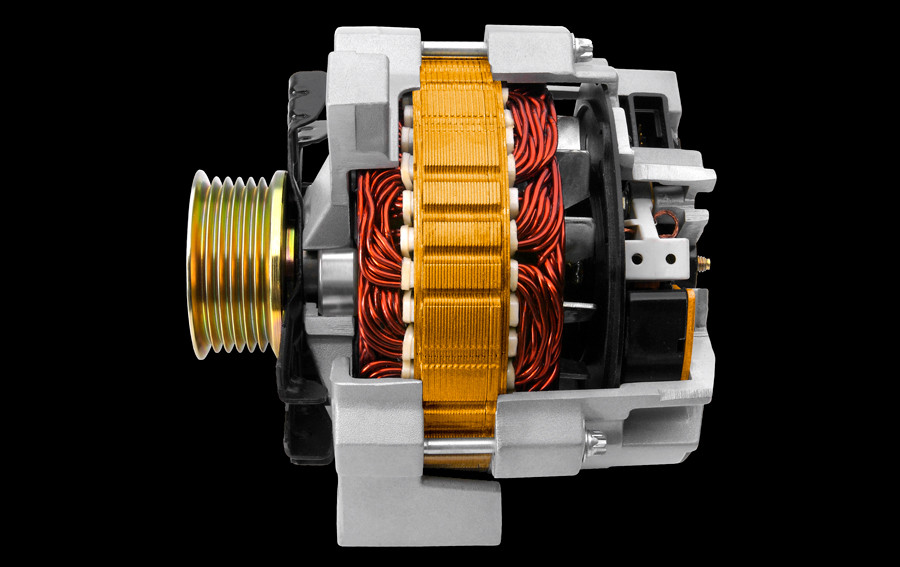How To Fix Car Trunk Latch: A Comprehensive Guide
Introduction
The “how to fix car trunk latch” question is a common challenge for vehicle owners. If you’re experiencing issues with your car trunk not latching properly, or if it’s stuck closed, CARDIAGTECH.NET offers solutions. We will explore troubleshooting steps, repair strategies, and maintenance tips to ensure your trunk functions smoothly. By understanding the components of the latch mechanism and following our detailed guidance, you can diagnose and resolve many common trunk latch problems.
1. Understanding the Car Trunk Latch Mechanism
Before diving into repairs, it’s crucial to understand how a car trunk latch works. The mechanism typically includes:
- Latch: The part that physically secures the trunk.
- Striker: The metal loop or bar that the latch catches onto, usually mounted on the car’s body.
- Actuator: An electric motor or solenoid that controls the latch’s opening and closing.
- Cables and Linkages: Mechanical connections that transmit the opening action from the handle or button to the latch.
1.1. Common Problems with Car Trunk Latches
Several issues can cause a trunk latch to malfunction:
- Mechanical Failure: Worn or broken latch components.
- Electrical Issues: Faulty actuators, wiring problems, or blown fuses.
- Misalignment: The latch and striker not lining up correctly.
- Corrosion and Dirt: Buildup preventing smooth operation.
- Damaged Cables: Stretched or broken cables hindering the release mechanism.
2. Diagnosing a Car Trunk Latch Problem
2.1. Initial Inspection
Begin by visually inspecting the trunk latch and striker. Look for:
- Visible Damage: Cracks, bends, or breaks in the latch or striker.
- Obstructions: Debris, dirt, or foreign objects blocking the mechanism.
- Corrosion: Rust or corrosion on any part of the latch.
2.2. Testing the Latch Manually
Try to manually operate the latch with a screwdriver or similar tool. This can help determine if the latch is mechanically sound.
- Locate the Latch: Find the latch mechanism on the trunk lid.
- Simulate Closing: Use the screwdriver to push the latch into the closed position.
- Observe: See if the latch catches and holds. If it doesn’t, the latch itself may be faulty.
2.3. Checking Electrical Components
If your car has an electric trunk release, check the following:
- Fuse: Locate the fuse for the trunk release in your car’s fuse box (refer to your owner’s manual). Check if the fuse is blown and replace it if necessary.
- Actuator: Listen for a clicking sound when you press the trunk release button. If you don’t hear anything, the actuator might be faulty.
- Wiring: Inspect the wiring connected to the actuator for any damage or loose connections.
2.4. Verifying Alignment
Misalignment is a common issue. Check if the striker is properly aligned with the latch.
- Visual Check: Look at the position of the striker relative to the latch.
- Adjustment: If misaligned, you might be able to loosen the striker and adjust its position.
3. Tools and Materials Needed
Before starting any repair work, gather the necessary tools and materials. Having these on hand will make the process smoother and more efficient. CARDIAGTECH.NET can supply all these tools.
3.1. Basic Tools
- Screwdrivers: Both Phillips head and flathead screwdrivers in various sizes.
- Socket Set: A set of sockets and a ratchet for removing and tightening bolts.
- Pliers: Standard pliers, needle-nose pliers, and possibly locking pliers.
- Wrench Set: A set of open-end and box-end wrenches.
3.2. Specialized Tools
- Multimeter: For testing electrical circuits and components.
- Trim Removal Tools: To remove interior panels without causing damage.
- Penetrating Oil: To loosen rusted or stuck parts.
- Adjustable Wrench: For added leverage on stubborn bolts.
3.3. Materials and Supplies
- Replacement Latch or Striker: If the existing parts are damaged beyond repair.
- Electrical Contact Cleaner: To clean electrical connections.
- Lubricant: Such as WD-40 or lithium grease, to lubricate moving parts.
- Fuses: Replacement fuses for the trunk release circuit.
- Wiring and Connectors: For repairing any damaged wiring.
4. Step-by-Step Guide to Fixing a Car Trunk Latch
4.1. Opening a Stuck Trunk
If the trunk is stuck closed, here are a few methods to try:
- Use the Key: Sometimes, the simplest solution is the best. Try using the physical key to open the trunk.
- Internal Release: Many cars have an internal trunk release lever, often located in the glove compartment or near the driver’s seat.
- Fold-Down Seats: If your car has fold-down rear seats, you might be able to access the trunk from inside the car.
- Emergency Release: Some cars have an emergency trunk release inside the trunk, usually a small handle or cable.
4.2. Adjusting the Striker
If the trunk isn’t latching because of misalignment, adjusting the striker can help.
- Loosen the Striker: Use a socket or wrench to loosen the bolts holding the striker in place.
- Adjust the Position: Move the striker slightly up, down, left, or right as needed.
- Tighten the Bolts: Once the striker is in the correct position, tighten the bolts securely.
- Test the Latch: Close the trunk to see if it latches properly. Repeat the adjustment if necessary.
4.3. Cleaning and Lubricating the Latch Mechanism
Corrosion and dirt can prevent the latch from working smoothly.
- Clean the Latch: Use a wire brush or compressed air to remove any dirt or corrosion from the latch and striker.
- Lubricate the Latch: Apply lubricant to all moving parts of the latch mechanism.
- Work the Latch: Open and close the latch several times to distribute the lubricant.
4.4. Replacing a Damaged Latch
If the latch is broken or worn, it may need to be replaced.
- Remove Interior Trim: Use trim removal tools to remove any interior panels that are blocking access to the latch.
- Disconnect Electrical Connections: If the latch has electrical connections, disconnect them carefully.
- Remove the Old Latch: Use a socket or wrench to remove the bolts holding the latch in place.
- Install the New Latch: Install the new latch in the reverse order, making sure to tighten all bolts securely.
- Reconnect Electrical Connections: Reconnect any electrical connections.
- Test the Latch: Close the trunk to see if the new latch works properly.
- Reinstall Interior Trim: Reinstall any interior panels that were removed.
4.5. Repairing Electrical Issues
If the trunk release isn’t working due to an electrical problem, follow these steps:
- Check the Fuse: As mentioned earlier, check the fuse for the trunk release and replace it if necessary.
- Test the Actuator: Use a multimeter to test the actuator. If it’s not receiving power, there may be a wiring problem.
- Inspect the Wiring: Look for any damaged or broken wires. Repair or replace any damaged wiring.
- Check the Switch: The switch that activates the trunk release may be faulty. Use a multimeter to test the switch.
5. Advanced Troubleshooting
5.1. Using a Multimeter for Diagnosis
A multimeter is an invaluable tool for diagnosing electrical problems. Here’s how to use it:
- Continuity Testing: Check for broken wires by testing the continuity of the circuit.
- Voltage Testing: Ensure the actuator is receiving the correct voltage.
- Resistance Testing: Measure the resistance of the actuator to ensure it’s within the specified range.
5.2. Reading Wiring Diagrams
Understanding wiring diagrams can help you trace electrical circuits and identify potential problems. CARDIAGTECH.NET offers diagnostic services.
- Locate the Diagram: Find the wiring diagram for your car’s trunk release system.
- Trace the Circuit: Follow the circuit from the power source to the actuator.
- Identify Components: Locate all the components in the circuit, such as fuses, switches, and relays.
- Test Each Component: Use a multimeter to test each component and identify any faults.
5.3. When to Seek Professional Help
If you’ve tried the above steps and are still unable to fix the trunk latch, it may be time to seek professional help. Complex electrical issues or significant mechanical damage may require specialized tools and expertise.
6. Maintenance Tips for Car Trunk Latches
Regular maintenance can prevent many common trunk latch problems.
6.1. Regular Cleaning and Lubrication
Keep the latch mechanism clean and lubricated to ensure smooth operation.
- Clean Regularly: Wipe down the latch and striker with a clean cloth to remove dirt and debris.
- Lubricate Regularly: Apply lubricant to all moving parts of the latch mechanism every few months.
6.2. Checking for Misalignment
Periodically check the alignment of the striker and adjust as needed.
- Visual Inspection: Look at the position of the striker relative to the latch.
- Adjustment: If misaligned, loosen the striker and adjust its position.
6.3. Preventing Corrosion
Protect the latch from corrosion by applying a rust inhibitor.
- Apply Rust Inhibitor: Spray a rust inhibitor on the latch and striker, especially in areas prone to rust.
- Keep Dry: Try to keep the trunk area dry to prevent moisture buildup.
7. Benefits of a Properly Functioning Trunk Latch
A properly functioning trunk latch provides several benefits:
7.1. Security
A secure trunk latch prevents theft and keeps your belongings safe.
7.2. Weather Protection
A properly sealed trunk protects your belongings from rain, snow, and other elements.
7.3. Convenience
A functioning trunk latch makes it easy to access your belongings.
8. The Role of CARDIAGTECH.NET in Automotive Repair
CARDIAGTECH.NET offers a wide range of tools and equipment to help you diagnose and repair car trunk latches and other automotive problems. We can help you keep your vehicle in top condition with high-quality products and expert advice.
8.1. High-Quality Tools and Equipment
We provide top-of-the-line tools and equipment for automotive repair.
8.2. Expert Advice and Support
Our team of experts can provide advice and support to help you diagnose and repair any automotive problem.
8.3. Comprehensive Product Range
From basic tools to specialized equipment, we have everything you need to keep your car running smoothly.
9. Success Stories
Here are a few examples of how CARDIAGTECH.NET has helped customers fix their car trunk latches:
9.1. Case Study 1: Misaligned Striker
A customer was having trouble with their trunk not latching properly. After following our instructions, they were able to adjust the striker and fix the problem in just a few minutes.
9.2. Case Study 2: Electrical Issue
Another customer had a trunk release that wasn’t working. After using a multimeter to test the circuit, they found a blown fuse. Replacing the fuse fixed the problem.
9.3. Case Study 3: Damaged Latch
One of our customers had a damaged latch that needed to be replaced. After purchasing a replacement latch from CARDIAGTECH.NET, they were able to install it and get their trunk working again.
10. Frequently Asked Questions (FAQs)
10.1. Why won’t my car trunk latch close?
Several reasons can cause this, including misalignment, mechanical failure, electrical issues, or corrosion.
10.2. How do I open a trunk that won’t open?
Try using the key, internal release, fold-down seats, or emergency release.
10.3. Can I fix a car trunk latch myself?
Yes, many trunk latch problems can be fixed with basic tools and some patience.
10.4. What tools do I need to fix a car trunk latch?
You’ll need screwdrivers, a socket set, pliers, and possibly a multimeter.
10.5. How do I adjust the striker on my car trunk?
Loosen the bolts holding the striker, adjust its position, and tighten the bolts.
10.6. How do I clean a car trunk latch?
Use a wire brush or compressed air to remove dirt and corrosion, then apply lubricant.
10.7. When should I replace my car trunk latch?
If the latch is broken, worn, or cannot be repaired.
10.8. How do I test the electrical components of my car trunk latch?
Use a multimeter to check for voltage, continuity, and resistance.
10.9. What is the role of CARDIAGTECH.NET in automotive repair?
CARDIAGTECH.NET provides high-quality tools, equipment, and expert advice for automotive repair.
10.10. How can I prevent car trunk latch problems?
Regularly clean and lubricate the latch, check for misalignment, and prevent corrosion.
11. Call to Action
Are you struggling with a car trunk latch that won’t close or open properly? Do you need high-quality tools and expert advice to get the job done right? Contact CARDIAGTECH.NET today. Our team is ready to assist you with all your automotive repair needs.
- Address: 276 Reock St, City of Orange, NJ 07050, United States
- WhatsApp: +1 (641) 206-8880
- Website: CARDIAGTECH.NET
Don’t let a faulty trunk latch inconvenience you any longer. Reach out to CARDIAGTECH.NET, and let us help you restore your vehicle to its optimal condition. Our comprehensive range of tools and our expert support will ensure you have everything you need for a successful repair. Contact us now and experience the CARDIAGTECH.NET difference!





